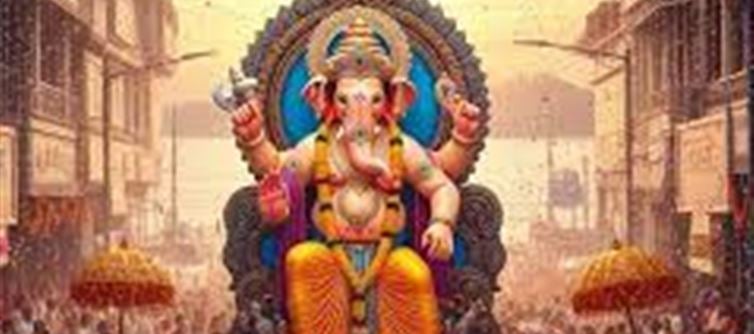
1. Anant Chaturdashi – The Day of Divine Farewell
Anant Chaturdashi marks the final day of Ganeshotsav when Lord Ganesha is bid farewell through Visarjan. But beyond the immersion rituals lies a deeper spiritual significance connected to Lord Vishnu’s infinite form.
2. Lord vishnu as Anant – The Eternal Sustainer
On this day, devotees also honour Lord Vishnu, worshipped as Anant – the infinite one who rests on the cosmic serpent Ananta Shesha, symbolising eternal preservation and protection.
3. Mythological Roots – Lessons from Mahabharata
Legends from the Mahabharata narrate how Lord krishna advised Yudhishthira to observe the Anant Vrata during the Pandavas’ exile, teaching that devotion to the eternal sustainer restores balance and prosperity.
4. The Sacred Thread – Anant Sutra with 14 Knots
A key ritual involves tying a turmeric and saffron-coloured thread with 14 knots, symbolising universal order and divine connection. Devotees believe it grants protection, prosperity, and spiritual strength.
5. Ganesh Visarjan – Symbol of Detachment
As the clay idol of Lord Ganesha dissolves in water, it reminds devotees to surrender ego, release attachments, and embrace life’s transient nature with faith in divine continuity.
6. Unity of Traditions – Ganesha and vishnu Together
The day beautifully merges devotion to Lord Ganesha, remover of obstacles, and Lord Vishnu, eternal sustainer – symbolising balance between beginnings and infinity, action and surrender.
7. Spiritual Message – Embrace Change with Grace
Anant Chaturdashi teaches that endings are not losses but transitions. Just as Ganesha departs with a promise to return, vishnu represents the eternal presence guiding every cycle of life..jpg)




 click and follow Indiaherald WhatsApp channel
click and follow Indiaherald WhatsApp channel